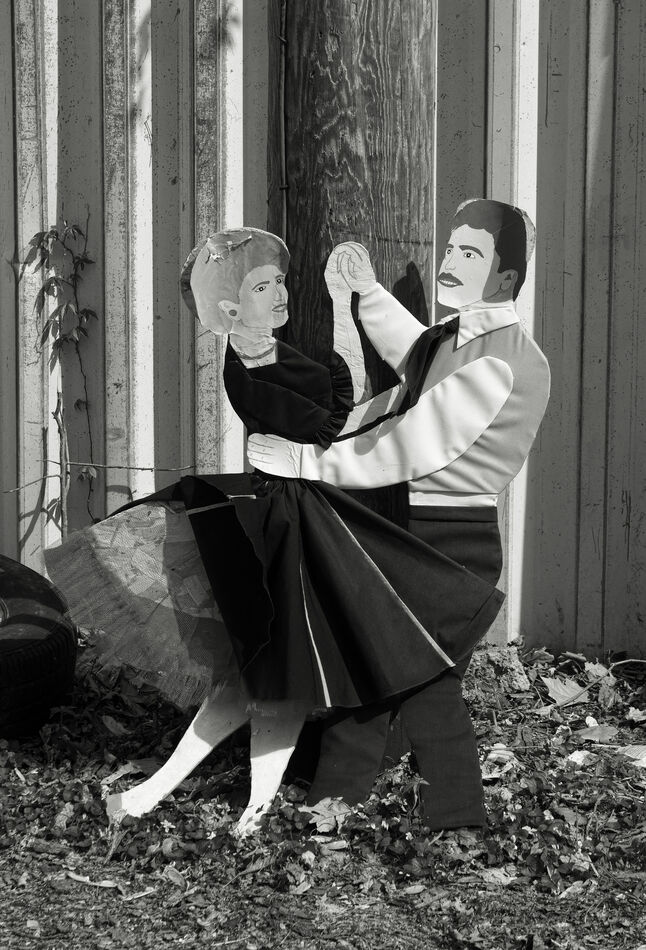monochrome versus color conversion to B&W
Aug 25, 2023 10:49:48 #
Ysarex
Loc: St. Louis
Canisdirus wrote:
Sharpness is hardly even an issue anymore...and the resolution...well...you would have to tell everyone...they wouldn't see it on their own.
That's right. What are folks trying to gain from the monochrome conversion? There are some specialty applications (astro), but if you're not after those what's the rationale? Here's the answer, hype included, from the folks who make the camera: "The Leica M10 Monochrom opens the door to a new dimension of black-and-white photography. Equipped with a newly developed image sensor, the camera delivers an extremely high-quality rendition with breathtaking detail resolution.
The absence of a color filter array and exceedingly high sensor resolution of 40 megapixels result in an unprecedented depiction of even the finest details, along with an exceptionally natural-looking sharpness."[my bold]
Back to the OP's question: "Is it really worth it to convert to pure monochrome? I am willing to do it if there is a discernbile different in resolution, sharpness and overall image quality." [my bold]
The OP's asking for it: resolution and sharpness. Leica advertises it: finest details, detail resolution.
And you're right, sharpness and resolution are hardly even an issue. The fact is our color images are more than sharp enough and they don't lose that sharpness and resolution when converted to b&w. The monochrome sensor is a pretty minor improvement in an area where it doesn't much matter because we already have enough.
Take it from Scotty who you're responding to: The first thing he had to say in this thread: "I had a 24MP A7 II converted to monochrome and the increase in sharpness was obvious. I later got a 45.7MP Z7 and found that the results were about the same using the same lens when I did a B&W conversion to the Z7 raw file. If I hadn't had both options I would not have been able to confirm this. But either option is well beyond the capability of most of my lenses." [my bold]
Aug 25, 2023 10:59:37 #
Ysarex wrote:
That's right. What are folks trying to gain from t... (show quote)
Sensor is everything...you take an old sensor...convert it...prepare to be disappointed.
Luckily or unluckily (depending on your objectivity)...folks never admit mistakes.
In fact they will do the opposite and convince others they made the right choice...

Aug 25, 2023 11:57:11 #
Canisdirus wrote:
Sensor is everything...you take an old sensor...convert it...prepare to be disappointed.
Luckily or unluckily (depending on your objectivity)...folks never admit mistakes.
In fact they will do the opposite and convince others they made the right choice...
Luckily or unluckily (depending on your objectivity)...folks never admit mistakes.
In fact they will do the opposite and convince others they made the right choice...

The majority of conversions are done on older sensors. Why take the risk?
I was not disappointed. I was convinced I did the right thing. But I eventually acquired an A7 III because the Z7 simply has too much resolution for normal purposes.
Here is a direct comparison: an older sensor (A7 II 2014) converted to monochrome and a slightly newer version (A7 III 2018) with its Bayer array still in place.
I changed the ISO in the camera to get the same raw image brightness. That gives a slight advantage to the monochrome camera when it comes to noise and DR, especially at higher ISO settings.
Otherwise it's the same aperture and shutter speed and the same focus point.
#1 is clearly sharper (at 100%) as #2. You can't miss this in the grass, the leaves and pine needles, the small white flowers and the debris floating on the water.
#1 shows some moiré along the fence that doesn't show in #2. The A7 III reduced that with the demosaicing step that blurs the image.
The same lens was used on both cameras. Both are hand-held at 1/1000s and f/8.
Although you need to pixel peep to see the difference, it's clearly there. Anyone who lives and dies by proof at 100% cannot deny what is clear in this comparison.
On the other hand, anyone who views these images from a normal viewing distance will have trouble telling them apart. That's why I have no plans to convert a camera with more than 24MP.
#1 A7 II monochrome at ISO 200 - no post processing
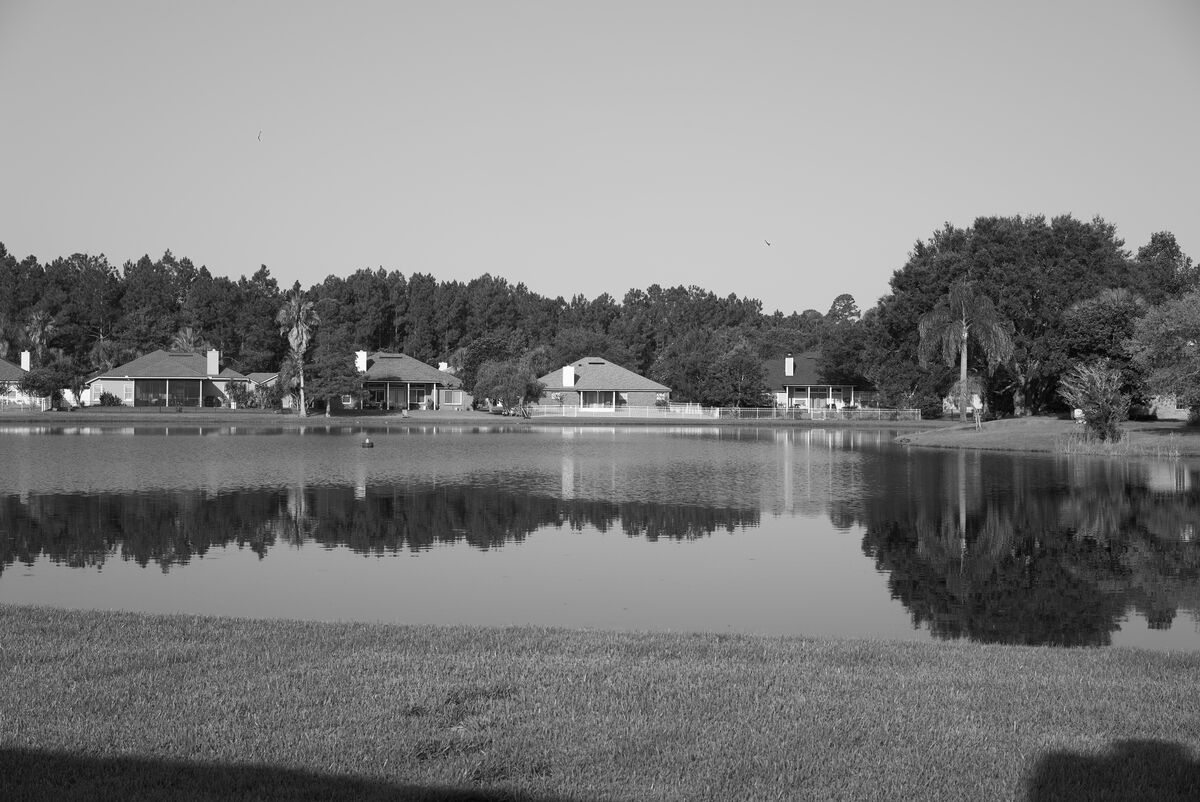
(Download)
#2 A7 III at ISO 400 - a straight conversion to BYW with no adjustments
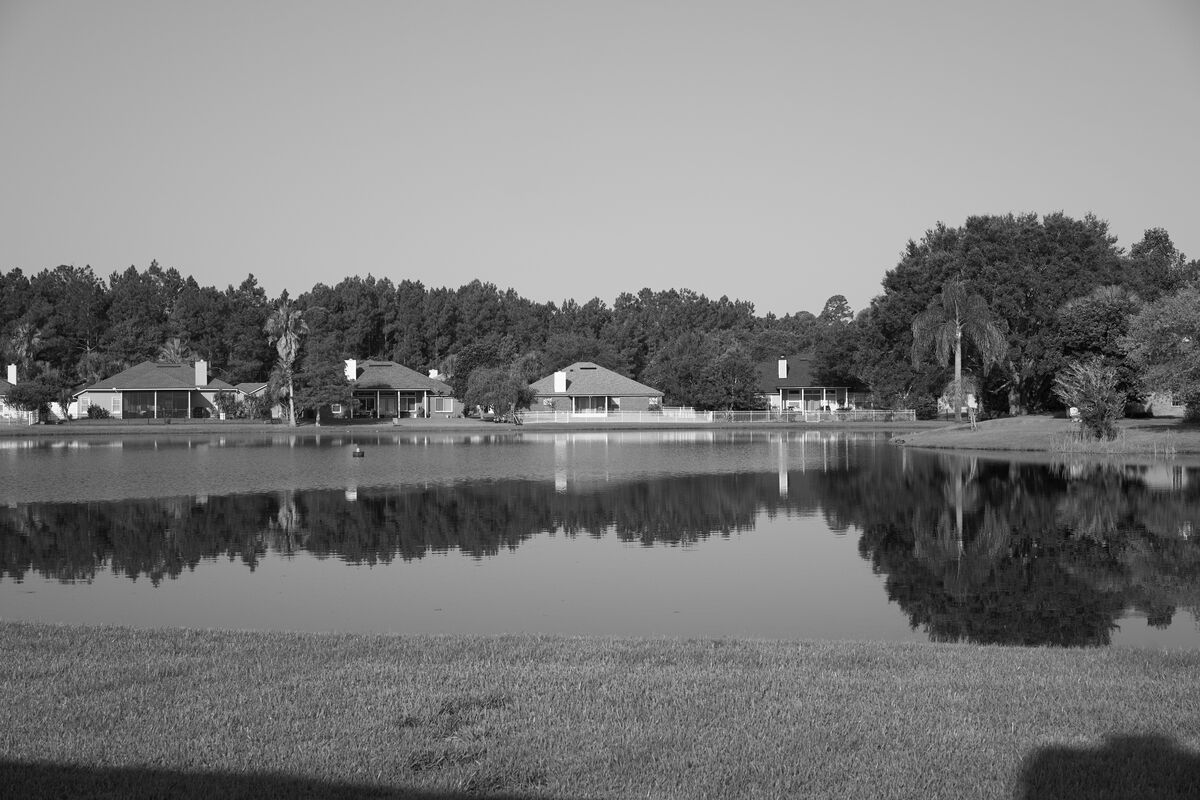
(Download)
Aug 25, 2023 12:05:21 #
selmslie wrote:
The majority of conversions are done on older sens... (show quote)
There isn't much of a risk for converting...but old sensors are just that...old.
I will always take the path with the most options...and shooting in color does exactly that...not B&W.
I'm sure you feel you did the right thing...everyone always does...even if it is not true.
Look at the Oly users...living on borrowed time...market well past them...and accelerating away.
They STILL will go out of their way to promote Oly...
For the very same reason...no one likes to think they made a mistake...even privately...surely not in public.
Not a mistake when Oly came out...but clearly one today.
Aug 25, 2023 12:18:44 #
Canisdirus wrote:
There isn't much of a risk for converting...but old sensors are just that...old.
The risk was minimal but there are two minor defects showing in the sky - little dark squiggles in the sky, always in the same place. These happened during or just after the conversion.
I always need to check to see if they are visible and they are easily removed.
Aug 25, 2023 12:22:31 #
Ysarex wrote:
That's right. What are folks trying to gain from t... (show quote)
The Leica M10 Monochrome would certainly be a step up over what I have in a modified camera. Since the camera would be aware that it is monochrome, it would open the door to walk around JPEG since the JPEG images wouldn't really need much in the way of post processing.
As a comparison with the modified camera, it is not aware that it is monochrome, and to take JPEG pictures, the camera is going to Demosaic the image and right away loose the resolution advantage.
Nor does it make sense to shoot in RAW and to then use DxO Photolab since it also would subject the image to Demosaicing too.
The following image represents what I do have to do to images with a modified camera. In this case, I am going to using the Sony 10-18mm wide angle lens at 14mm which in the original causes the lamp post on the left to lean inward towards the center and on the right, same thing for the edge of the building. This has been corrected with DxO ViewPoint. So the post processing steps are as follows:
1) Use Monochrome2DNG to process the RAW into a monochrome DNG file with no demosaicing performed.
2) Open the image in DxO ViewPoint to straighten the edges.
And I find that if opening the RAW in Lightroom, it uses the wrong lens model and doesn't fix the leaning problem.
The Leica M10 would have a huge advantage.
And I am adding the same RAW processed with only DxO Photolab as a comparison.
You can compare the 2. But I do think that when I look down the sidewalk with it zoomed in, I am thinking that DxO Photolab has done a better job on lettering even though it has been demosaiced. Perhaps demosaicing a mono file has less penalty than demosaicing a color file? I have been trying to work this out in my mind the difference, but I have not convinced myself one way or the other.
One difference I do see is if I look very closely at the twigs on the tree branches at the top of the tree. In the DxO image, I can see some holoing on some of the twigs. But I don't see that on the first image which had no demosaicing.
Monochrome2DNG and then Viewpoint
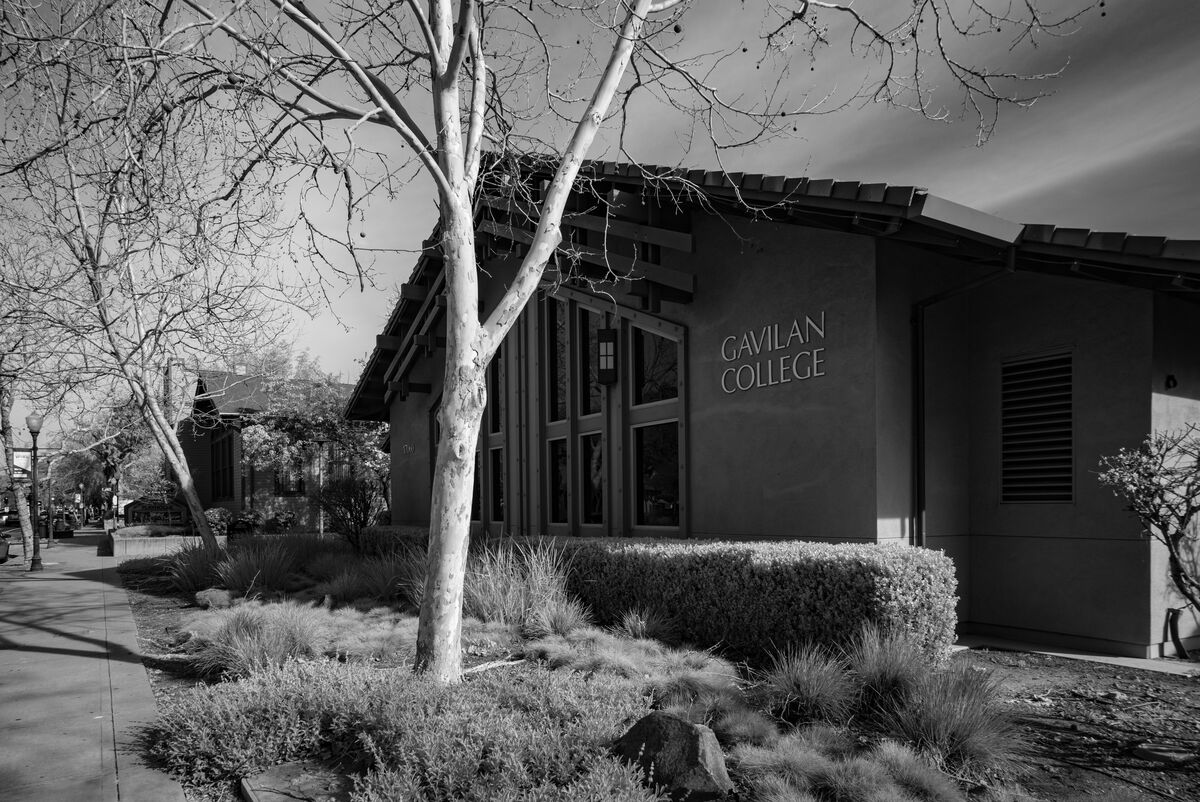
(Download)
Processed with DxO Photolab, which means that it was demosaiced, but the leaning post was corrected
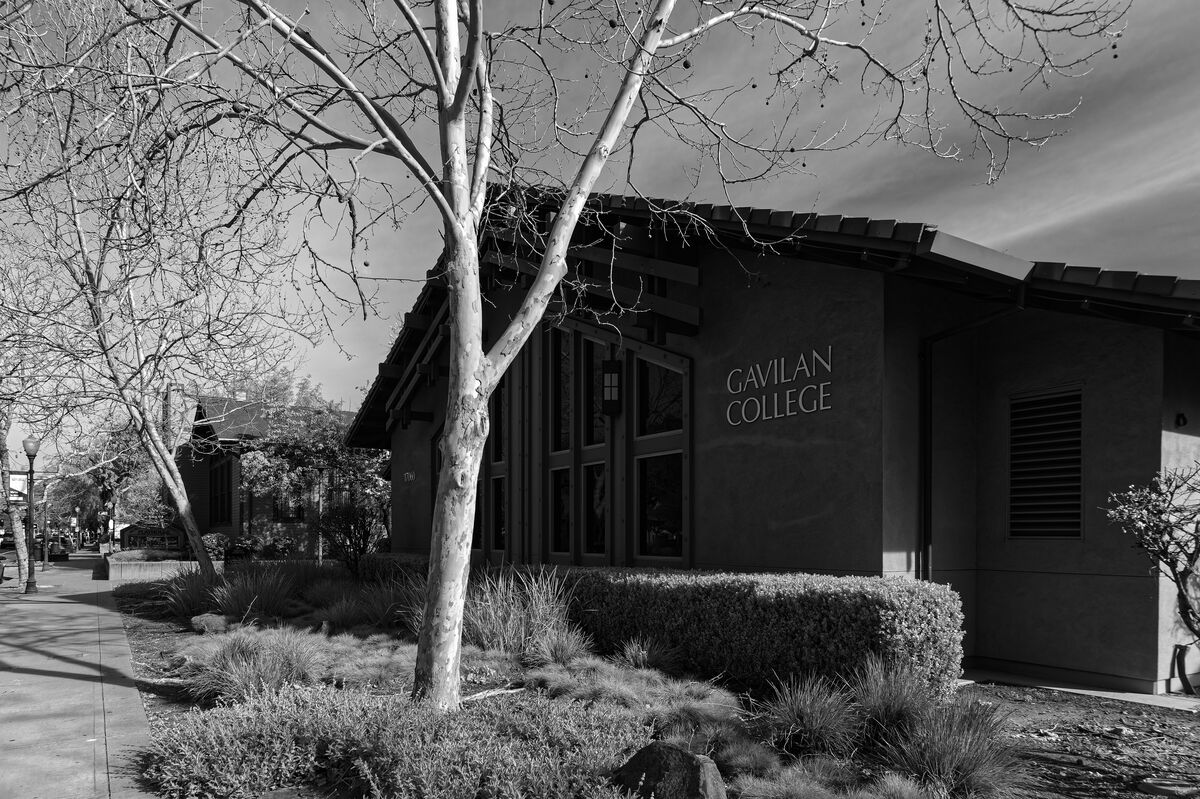
(Download)
Aug 25, 2023 12:28:09 #
Ysarex
Loc: St. Louis
selmslie wrote:
Anyone who lives and dies by proof at 100% cannot deny what is clear in this comparison.
That the monochrome sensor version is sharper, but why? There's an AA filter in place over the A7III sensor and it's been removed from the A7II. Is that all we're seeing? My Nikon, Leica, and Fuji cameras have no AA filter to begin with. How much of a difference is that making? It's hard to know in these type of comparisons what's the cause. How about the cause is post processing? How did you set the sharpening the A7III image in C1? Hope it's not at default. How about the noise filtering? Did you make sure and turn that off?
Aug 25, 2023 12:31:26 #
JimH123 wrote:
Perhaps demosaicing a mono file has less penalty than demosaicing a color file?
It should since in a color file the process is trying to account for the difference in luminance levels recorded by the red and blue sensels compared to those recorded for the green sensels that get 60-70% of the final luminance weight.
What it would see is the entire image bathed in a peculiar color cast (magenta?) that wiped out the differences in color luminance.
Aug 25, 2023 12:37:07 #
Ysarex wrote:
That the monochrome sensor version is sharper, b ... (show quote)
Sony doesn't say whether the A7 III has an AA filter. https://www.dpreview.com/forums/post/60970118
No, I made no changes from the default settings for sharpness or noise for either image. I didn't tough the moiré either.
Why would I? To complicate the comparison?
Aug 25, 2023 12:39:11 #
Ysarex
Loc: St. Louis
JimH123 wrote:
So the post processing steps are as follows:
1) Use Monochrome2DNG to process the RAW into a monochrome DNG file with no demosaicing performed.
1) Use Monochrome2DNG to process the RAW into a monochrome DNG file with no demosaicing performed.
Yep, that's an extra step -- PITA.
JimH123 wrote:
Perhaps demosaicing a mono file has less penalty than demosaicing a color file?
Or perhaps the penalty using modern software to demosaices a color file is so slight now that the whole monochrome sensor fad (sans special purpose) isn't worth it.
The square dancers below appeared in the alley behind my property the other day so I grabbed a snap. The image is more than sharp enough. And that's with my lowest resolution least sharp zoom lens combination camera. I have four other cameras and lots of lenses that are much better than this one (Canon G7). I don't need more resolution and sharpness.
Aug 25, 2023 12:43:05 #
Ysarex wrote:
Yep, that's an extra step -- PITA.
It's not a PITA.
It's done in batch to a whole directory full of raw files (or a selection) and it take less time than it takes to open Capture One.
Ysarex wrote:
Or perhaps the penalty using modern software to demosaices a color file is so slight now that the whole monochrome sensor fad (sans special purpose) isn't worth it.
The penalty has remained consistent. You end up with about 1/2 of the effective area resolution and that translates to about a 30% loss in sharpness whether you started with 18MP or 60MP.
But if you start with more MP it's harder to see from a normal viewing distance.
Aug 25, 2023 12:45:10 #
Ysarex
Loc: St. Louis
selmslie wrote:
Sony doesn't say whether the A7 III has an AA filter. https://www.dpreview.com/forums/post/60970118
Most reviewers acknowledge it's presence. Sony uses the R designation (A7RII) to indicate no AA filter. So you're just showing us the effect of the AA filter?
selmslie wrote:
No, I made no changes from the default settings for sharpness or noise for either image. I didn't tough the moiré either.
Why would I?
Why would I?
Because they can interfere with the comparison. C1's default noise filtering most certainly.
Aug 25, 2023 12:58:50 #
Ysarex wrote:
Most reviewers acknowledge it's presence. Sony uses the R designation (A7RII) to indicate no AA filter.
Most reviewers are probably making assumptions. They have no inside information and Sony is not forthcoming.
The "R" designation stands for Resolution.
Ysarex wrote:
Because they can interfere with the comparison. C1's default noise filtering most certainly.
I don't see any noise in either image and I don't see any point in trying to introduce it.
In any case, the advantage would go to the monochrome sensor since it needs half as much exposure.
Aug 25, 2023 13:31:33 #
Ysarex
Loc: St. Louis
selmslie wrote:
Most reviewers are probably making assumptions. They have no inside information and Sony is not forthcoming.
Most reviewers are probably making assumptions. They have no inside information and Sony is not forthcoming.
BS. Reviewers can look in the camera and see it. There's businesses that will remove it for you. Even Wikipedia knows it's there. https://en.wikipedia.org/wiki/Sony_α7_III
Aug 25, 2023 14:17:31 #
Ysarex wrote:
BS. Reviewers can look in the camera and see it. There's businesses that will remove it for you. Even Wikipedia knows it's there. https://en.wikipedia.org/wiki/Sony_α7_III
The wiki article says that, "The Sony A7 III does not have a vertical AA filter, it only has a horizontal one." Can a look in the camera tell them apart?
If you could tell by looking in the camera there would not be any controversy.
But: https://www.dpreview.com/forums/post/60833637 "It is strange that if you go to Sony’s site, they make no mention of the presence or absence of a low-pass filter, while B&H and Kenmore say there is none."
I can say for sure it was removed from my A7 II along with the Bayer array.
And I can also see that the 16MP X100T does not have one and the presence of moiré suggests that it could use one - yet another one of Fuji's false claims about X-Trans.
Moiré is easily avoided by moving a little closer to or further from the subject.
But it's not present in nature, only in man-made objects, so I don't really care.
If you want to reply, then register here. Registration is free and your account is created instantly, so you can post right away.



